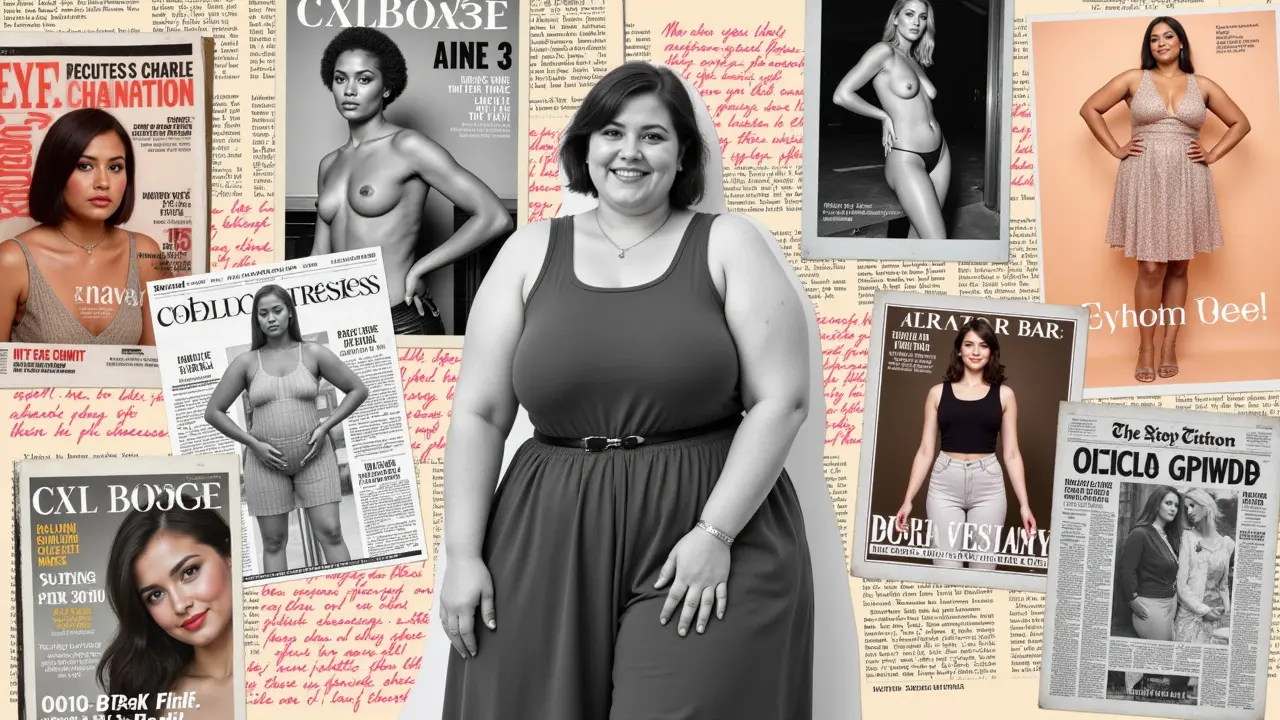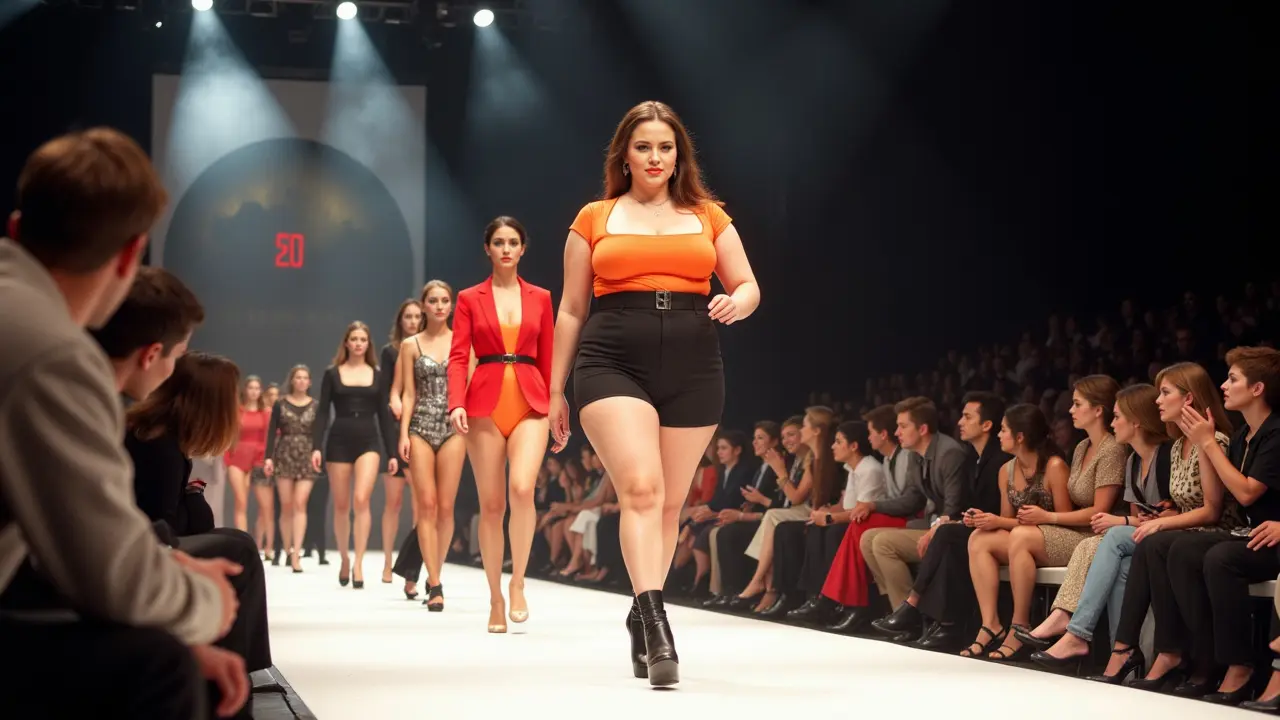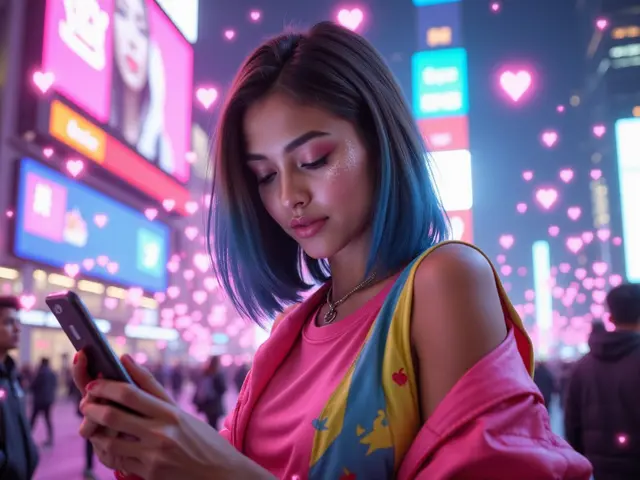You’ve probably spent a moment or two scrolling through Instagram, seeing beautiful, confident plus-size models showing off killer looks. But who actually blazed that trail? The story of the world’s first plus-size model isn’t as straightforward as you might hope. There wasn’t a single splashy photoshoot or runway show that started it all—instead, the movement grew in secret, fueled by a handful of fiercely determined women who wanted to see themselves reflected in the fashion world. Some were called brave, some were called controversial, but all of them pushed at the boundaries of what was considered “beautiful.” Once you hear their names and stories, you’ll wonder why the world ever limited its idea of style to one size.
Who Was the First Plus-Size Model? Settling the Debate
When people ask, “Who’s the first plus-size model ever?” the name Emme pops up everywhere. Emme—whose full name is Melissa Owens Miller—absolutely shook up the modeling world in the 1990s. She was signed to Revlon and went on to appear in People Magazine’s “50 Most Beautiful People” list twice, a major coup for anyone not molded in the industry’s then-standard size-2 figure. But, believe it or not, there were trailblazers before her, even if their names have faded into fashion history.
If you’re digging deeper, you’ll find the spotlight sometimes lands on model and activist Mary Duffy, who started her career in the 1970s. After being rejected for “not fitting the sample size,” Mary decided she didn’t need anyone’s approval—she would make her own lane. She signed with the short-lived Big Beauties/Little Women agency, founded in 1977, and later became an advocate for size diversity, setting up her own agency. Another name often overlooked is Barbara Brickner, who modeled with high-profile plus-size labels in the mid-1990s and 2000s.
But if we’re hungry for the textbook “first,” then we might look further back. In the 1940s and 1950s, plus-size clothing companies like Lane Bryant were quietly employing “stout models,” but you’d rarely see them acknowledged as stars. It wasn’t until the 1970s and 1980s that actual plus-size modeling agencies started popping up, slowly planting the seeds for something bigger. Emme gets the “supermodel” badge, Mary Duffy is often credited for pushing the first doors open, and Lane Bryant’s early models remain the unsung pioneers.
Now, fashion history isn’t like a film with credits—you won’t find a single name enshrined in a golden frame. But the general consensus is that while Emme shot plus-size modeling into mainstream fame, Mary Duffy and a handful of others were the true pathfinders. It’s more of a relay race than a solo sprint.
Why does any of this matter? Because knowing the real roots helps you see just how much grit and guts it took to change the narrative. When you admire the confidence of today’s plus-size icons like Ashley Graham or Paloma Elsesser, you’re looking at the ripple effect of women who refused to give up on being seen and styled in their true bodies.
To capture a sense of how the landscape shifted, check out this table:
| Era | Notable Plus-Size Model | Milestone/Contribution |
|---|---|---|
| 1940s-1950s | Lane Bryant’s models | First commercial ‘stout’ modeling for catalogs |
| 1970s | Mary Duffy | Helped found Big Beauties agency, early body positivity advocating |
| 1990s | Emme | First signed to major agency, mainstream magazine covers |
So, if you’re ever debating this with friends, remember: there’s no single magic answer, but Emme and Mary Duffy are the big names you need to know.
Why Plus-Size Modeling Changed Fashion Forever
Ever noticed how fashion ads used to whisper a single story about beauty—skinny was practically a job requirement? Enter the plus-size model. It was like someone flung the curtains open and let in a gust of fresh air. This wasn’t just a small tweak; plus-size models turned the industry on its head, forcing advertisers and designers to wake up to the reality of actual human bodies. In the US alone, nearly 70% of women are now considered plus-size (size 14 or above). You’d think that ratio would have always shaped fashion, but nope, brands lagged behind.
Models like Emme did more than pose for the camera. They brought a tidal wave of change—retailers saw their sales rocket when they started using real, relatable bodies. Take Lane Bryant’s Cacique campaign in 2010: it featured plus-size models in lingerie and got more online buzz than Victoria’s Secret that season. When Ashley Graham landed her Sports Illustrated Swimsuit Issue cover in 2016, hashtags like #CurvesInBikinis exploded. Ordinary women finally saw someone who looked like them gracing billboards and magazines. That’s not just groundbreaking for fashion; that’s a revolution for self-esteem.
The ripples go well beyond clothing racks. Schools, mental health clinics, and ad agencies began rethinking what it means to be “attractive.” Plus-size models gave a much-needed boost to body positivity and started tough conversations: Can beauty really have a size limit? Why can’t you feel chic and sexy at any weight? Suddenly the answer was obvious. The data speaks for itself—sales for plus-size clothing in the United States hit nearly $35 billion in 2023, and they’re still climbing. People want to see themselves in the clothes they buy. It sounds simple, but it took decades to get the message across.
There’s another side to this that most people don’t talk about: the intense pressure these pioneers faced. When Emme started, fashion editors and producers doubted anyone would buy a magazine with a plus-size cover model. Agencies advised her to lose weight, even as she was setting new records. But being first means breaking rules. With every campaign and every runway strut, plus-size models showed that style—and success—don’t have to shrink to fit a single mold.
Now, the shift is trickling down. We’re seeing size-diverse mannequins in stores, wide size runs offered by luxury brands, and TV shows starring plus-size leads who aren’t just the comic relief. Want proof it’s working? Look at the insane popularity of brands like Savage X Fenty, which put inclusivity front and center and outsell their “traditional” counterparts regularly. Social media is another game-changer—body-positive influencers rack up millions of views and inspire their followings to celebrate, not hide, their curves.
The takeaway? Plus-size modeling isn’t some niche trend. It’s a permanent, powerful force that cracked open the fashion world and poured in some much-needed reality. Loving your body—and seeing it reflected in pop culture—can change the way you show up in the world. It’s strange it took this long, but now that door is wide open.

Breaking Down Barriers: Challenges and Victories in Plus-Size Modeling
No one becomes a first without fighting for it. The women at the frontlines of plus-size modeling didn’t just step onto a set and strike a pose—they had to bulldoze their way through criticism, stereotypes, and flat-out discrimination. Want to know the kind of comments models like Mary Duffy heard? “You’re pretty, but you’d be beautiful if you lost 40 pounds.” Not exactly a confidence boost, right?
The major fashion magazines once refused to feature plus-size bodies on the cover. Even catalogs, which actually sold clothes to real women, sometimes insisted on using only straight-size models and pinning clothes in secret. Models who refused to diet away their curves risked losing jobs or getting dropped by agencies. This was a lonely, uphill battle. Emme said publicly that her agent begged her not to reveal her size in interviews because it would “kill her career.” That’s the kind of daily tightrope these women walked.
It wasn’t just about squeezing into sample sizes—it was about changing what the “sample” was. Designers had to be convinced (sometimes kicking and screaming) to expand their offerings. The media, hungry for drama, often painted plus-size models as controversial rather than aspirational. It took fearless posing, candid interviews, and relentless advocacy to shift public opinion. Some plus-size models even invested in their own shoots, worked as spokespeople for emerging brands, and spoke up about eating disorders and low self-worth sparked by fashion’s impossible standards.
Every victory was hard-won. The first time Emme strode down a major runway at New York Fashion Week, she left producers speechless. When brands filmed commercials with curvy models—including gorgeous, un-retouched images—they saw a surge in engagement. This didn’t just help the industry; it helped everyday people. When girls saw someone who looked like them land a national beauty contract, they saw proof that their dreams weren’t limited by a size tag.
With every step forward, role models emerged. Tess Holliday, the first model of her size to be signed to a major agency, launched #EffYourBeautyStandards, sparking a global conversation. The message caught on: You don’t have to change yourself to fit in. Today, the market for plus-size clothes is bigger than ever, and high-profile fashion houses are scrambling to catch up. Magazines like British Vogue and Glamour now feature curvier bodies and even publish unretouched covers. There’s finally a sense that the wheels are turning—slowly, but surely.
None of this cancels out the challenges that remain. Studies from as recently as 2023 show that, despite progress, plus-size models still make up less than 2% of runway slots in major European fashion weeks. But as every new face pushes through the doors cracked open by pioneers like Emme and Mary Duffy, the room gets a little brighter—and a lot more interesting.
How to Support and Celebrate Plus-Size Models Today
If you want to be part of this sea change, support is easier (and more fun) than you think. It’s about who you follow, the brands you back, and the voices you amplify. Ditch labels that still refuse to offer inclusive sizing, and go for brands that celebrate every body. Take a look at places like Universal Standard or Savage X Fenty—these companies are building their reputation on representation and are cleaning up at the register because shoppers are tired of being ignored.
Don’t underestimate the power of social media. Follow, like, and comment on the posts of plus-size models—you’re boosting their platform, encouraging brands to keep up, and making it impossible for old-school gatekeepers to pretend demand isn’t there. Popular plus-size icons in 2025 include Ashley Graham, Paloma Elsesser, Precious Lee, and Tess Holliday. When you repost their content, share body-positive messages, or showcase your own style, you’re part of a feedback loop that rewards inclusivity.
Want a practical way to get involved? Next time you see a fashion campaign, check out who’s featured—and let brands know what you think. Brands love feedback, especially when it’s loud and clear: “We want to see more bodies like ours!” Leave reviews that mention size range, comfort, and how you felt seeing plus-size models on the website. Share stories—yours, or those of models who inspire you. Your voice matters, especially online.
There are also plenty of books, documentaries, and podcasts exploring the plus-size modeling world. If you’re a numbers person, keep an eye on industry data—the plus-size apparel market is projected to grow by nearly 5% each year. Translation: there’s momentum, and it’s not slowing down. By learning and sharing the stories of early trailblazers, you help keep history alive and push for more progress.
Feeling inspired? Maybe it’s your turn to step in front of a camera or join a size-diverse community online. You don’t need an agency or a magazine feature to champion body positivity. Look in your closet, try something new, and celebrate your own style. After all, fashion should be about feeling amazing, not shrinking to fit someone else’s mold.
Here’s the bottom line: Every time you support a plus-size model, you’re voting for a more real, welcoming version of beauty. The seeds were planted by women who refused to be silent, and every voice—yours included—keeps it all growing.






